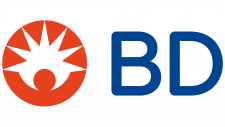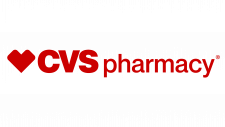Guerlain Logo
Guerlain stands as a pillar in the fragrance and cosmetics industry, established by the visionary Pierre-François Pascal Guerlain. Its birthplace, Paris, France, served as the cradle for this luxury brand, crafting exclusivity and elegance. Initially conceived to enchant the aristocracy with bespoke fragrances, Guerlain expanded its mastery to skincare and makeup, embodying beauty and refinement across generations.
Meaning and History
Founded in 1828, Guerlain quickly became synonymous with luxury and innovation in the world of perfumery and cosmetics. Pierre-François Pascal Guerlain’s dedication to crafting exceptional fragrances won him the prestigious title of “Perfumer to His Majesty”, bestowed by Empress Eugénie in 1853, the year the iconic Eau de Cologne Impériale was created. This marked the beginning of Guerlain’s longstanding relationship with royalty and aristocracy. Over the decades, Guerlain has introduced a myriad of iconic products, including the Jicky perfume in 1889, recognized as the first modern perfume. The 20th century saw Guerlain’s expansion into skincare and makeup, further solidifying its position as a pioneer in the beauty industry.
What is Guerlain Logo?
The Guerlain logo embodies the essence of elegance and timelessness. It features the brand’s name in a classic, serif font, often presented in gold to signify luxury and quality. This simplicity in design reflects Guerlain’s commitment to sophistication and its rich heritage in the world of beauty.
1955 – 1976
The logo presents a striking duo of colors: vibrant red and deep blue. These hues unite, symbolizing dynamism and reliability. The typography is bold, with a modern sans-serif font that conveys cleanliness and efficiency. The design is straightforward yet memorable, reflecting the brand’s essence in dental health.
1976 – 1988
The updated logo retains the iconic red and blue color scheme, yet the shades appear softer, more approachable. The letters now boast a three-dimensional effect, adding depth and a tactile sense. This subtle embossing effect gives a modern twist to the design, suggesting innovation and progress within the brand’s ethos. The logo maintains its clean, sans-serif typography, yet now there’s a gentler feel, in line with contemporary aesthetic preferences.
1988 – 1994
In this evolution, the logo casts aside the three-dimensional effect for a flat design, embracing minimalism. The colors remain, but now exhibit a bolder contrast with crisp edges, promoting clarity and directness. The typeface appears more streamlined, modernized with cleaner lines, reflecting a step towards simplicity and straightforward communication. This flatter design aligns with digital-friendly aesthetics, indicating the brand’s adaptability to changing technologies and consumer preferences.
1994 – 1997
This rendition reintroduces subtle shading to the logo, adding a touch of dimension. The red and blue colors deepen, enhancing visual impact. A white outline encircles the text, lending a sleek, modern halo effect that creates a pop against any background. The font’s character spacing tightens, crafting a more unified and cohesive appearance. This design tweak hints at the brand’s progressive approach while maintaining its iconic color identity.
1997 – 2005
The logo evolution softens the shading, creating a more subtle, refined depth. The colors are now brighter, offering a fresh, clean look. This design adopts a lighter touch, with the white outline becoming more pronounced, ensuring standout visibility. The typography’s kerning is perfected, ensuring each letter is distinct yet part of a seamless whole. This modernized logo signals a brand that values tradition while embracing a contemporary aesthetic.
2005 – Today
In the current logo, the shading has been entirely removed, offering a return to a flat, clean design. The colors are now more saturated, giving the logo a bold presence. The white outline has disappeared, presenting a more straightforward and direct visual identity. This simplification suggests a focus on clarity and accessibility, aligning the brand with modern graphic trends of minimalism and starkness. The overall effect is one of refreshed clarity, indicating a brand that values straightforwardness and purity.

















